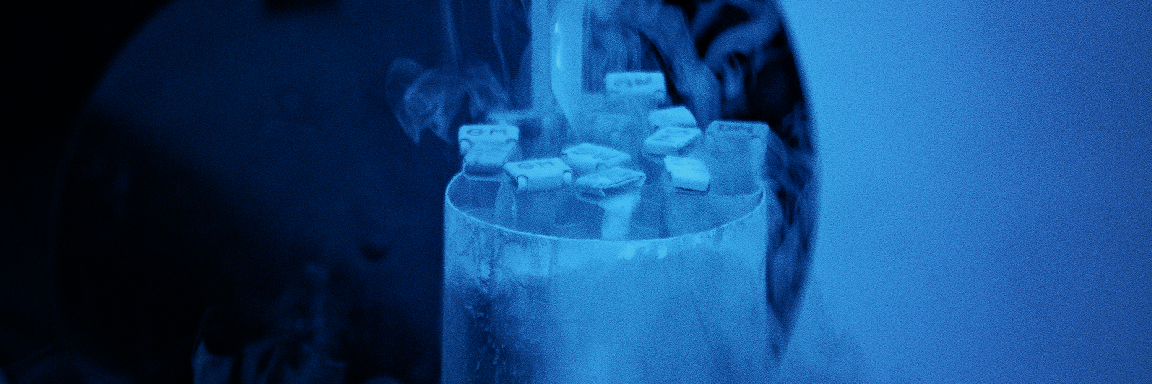
Sperm Cryopreservation
Sperm cryopreservation, also known as sperm freezing or sperm banking, involves the preservation and storage of semen samples at very low temperatures (-196°C) in liquid nitrogen for later use in assisted reproduction.
Sperm cryopreservation is currently the only option to preserve the reproductive potential of males who are exposed to potentially sterilizing treatments. This option should be offered to a male before starting oncology therapy. Oncologists, surgeons, urologists, and other specialists involved in treatments should be aware, before beginning chemotherapy or radiotherapy, of the procedures that are likely to affect fertility and the management of infertility post-treatment.
When and how to cryopreserve?
Sperm cryopreservation should be offered to all cancer patients as soon as possible and before initiating any therapy.
Blood tests are required prior to seminal freezing to determine infectious risk (HIV, hepatitis, and syphilis serology). If the definitive preservation of semen poses such a risk, the patient must accept specific conservation measures or potential limitations for later use that may be required.
The patient will provide an initial semen sample, which will be analyzed and frozen. Depending on its quality, advice will be given on the number of additional samples that should be provided to ensure an adequate quantity of frozen sperm for later reproductive use. The number of doses obtained and the post-thaw quality will depend on the initial condition of the ejaculate.
In oncology patients: Since the real possibility of fertility recovery is often unknown due to variables such as the initial stage of the disease, the use of genotoxic chemotherapy or radiotherapy, and the dosage, it is advisable to cryopreserve semen before starting genotoxic treatments.
The use of contraceptive measures from the beginning of oncological treatment is recommended, and they should be maintained for six months to a year after completion, due to the possibility of sperm DNA damage.
After one year from the end of treatment, it is advisable to perform a semen analysis to check the quality and degree of recovery.
If there is a desire for pregnancy, and the patient has no sperm after one year (azoospermia), or has very few sperm in the ejaculate (severe oligoasthenoteratozoospermia), the cryopreserved semen will be used.
If one year has passed since the end of oncological therapy, and pregnancy is not achieved after another year of unprotected sexual exposure, assisted reproduction techniques with cryopreserved semen are recommended instead of using fresh semen “recovered” post-chemotherapy.
In the event of recovery of sperm concentration and motility, and the use of assisted reproduction techniques, it is advisable to perform a DNA fragmentation study. If it is normal, the ejaculate can be used. Otherwise, it is recommended to use the cryopreserved sample.
In the case of azoospermic patients who have not cryopreserved semen, attempts can be made to recover testicular sperm for use in assisted reproduction, or the use of donor sperm.

